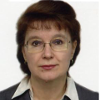Photophysics of Media Doped with Nanoobjects
A special issue of Nanomaterials (ISSN 2079-4991).
Deadline for manuscript submissions: closed (31 May 2019) | Viewed by 9208
Special Issue Editor
2. Department of Photonics, St. Petersburg Electrotechnical University (“LETI”), ul. Prof. Popova 5, 197376 St. Petersburg, Russia
3. Petersburg Nuclear Physics Institute, Part of Kurchatov National Research Center, 1 md. Orlova Roshcha, 188300 Gatchina, Russia
Interests: nano- and bio-technology; nanoparticles; organic and inorganic materials; liquid crystal; refractivity; coatings; laser-matter interaction
Special Issues, Collections and Topics in MDPI journals
Special Issue Information
Dear Colleagues,
The Special Issue on the “Photophysics of Media Doped with Nano-Objects” will be devoted to all aspects of photophysics process and nanotechnology approaches correlated with the organic and inorganic materials modified via the nanostructuration of their body or surfaces. The main focus is going to be centered on the use of perspective nanoobjects, such as fullerenes, carbon nanotubes, shungites, J-aggregates, Janus-nanoparticles, quantum dots, graphene oxides, DNA, etc., which can be considered as affective dopant agents to sensitize the conjugated organics, including liquid crystal ones. Moreover, the carbon nanotubes and relative nanostructures can be taken into account to modify the materials surface to increase their transparency, mechanical and wetting properties. The mechanisms responsible for the drastic change of photorefractivity, photoconductivity, etc. features of the modified nanocomposites will also be under investigation. Some innovative accent correlated with the replacement of nano-objects by bio-objects will be considered under the conditions of saving the basic matrix materials properties. As an additional, new process to develop the nanostructured solar energy elements, nonlinear absorbers, modulators, display devices, etc., will be proposed.
Prof. Natalia Vladimirovna Kamanina
Guest Editor
Manuscript Submission Information
Manuscripts should be submitted online at www.mdpi.com by registering and logging in to this website. Once you are registered, click here to go to the submission form. Manuscripts can be submitted until the deadline. All submissions that pass pre-check are peer-reviewed. Accepted papers will be published continuously in the journal (as soon as accepted) and will be listed together on the special issue website. Research articles, review articles as well as short communications are invited. For planned papers, a title and short abstract (about 100 words) can be sent to the Editorial Office for announcement on this website.
Submitted manuscripts should not have been published previously, nor be under consideration for publication elsewhere (except conference proceedings papers). All manuscripts are thoroughly refereed through a single-blind peer-review process. A guide for authors and other relevant information for submission of manuscripts is available on the Instructions for Authors page. Nanomaterials is an international peer-reviewed open access semimonthly journal published by MDPI.
Please visit the Instructions for Authors page before submitting a manuscript. The Article Processing Charge (APC) for publication in this open access journal is 2900 CHF (Swiss Francs). Submitted papers should be well formatted and use good English. Authors may use MDPI's English editing service prior to publication or during author revisions.
Keywords
- Photophysical process in the structured composites
- sensitization of the organics
- structuration of the materials surfaces
- laser-matter interaction, fullerenes, carbon nanotubes, quantum dots, shungites, graphene oxides, DNA, liquid crystals
- refractivity, spectra, photoconductivity, mechanical and wetting properties
- solar energy, display, biomedicine elements






